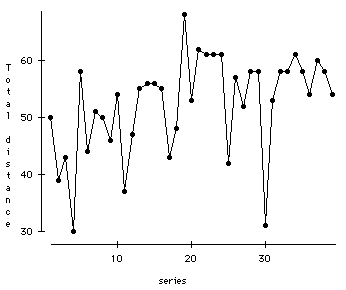Based on summary statistics, Lafferty (1993) asserts there is "not much difference" in the results for the two footballs. Evidence of a time effect, coupled with the way the data was collected, would suggest a test involving paired data. If we assume the pairs are independent, the normal probability plot of the paired differences suggests it is reasonable to use the Paired Difference t-test. The data yield a statistic of t = 0.420 with 38 d.f. and a corresponding p-value = 0.3385. We would therefore conclude there is not significant evidence of a difference between kicking distances for the two footballs.
The presence of flubbed kicks may be affecting the results. Three examples of rules for determining outliers might be:
i) None of the kicks are considered outliers.
ii) Kicks less than 15 yards are considered outliers.
iii) Kicks less than 20 yards are considered outliers.
Repeating the paired analysis using rule (ii) and eliminating the outliers gives a test statistic of t = 1.555 with 34 d.f. and a p-value = 0.0646. This is a much smaller p-value though we still may not conclude there is a difference in the kicking distances for the two balls.
